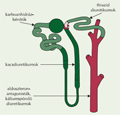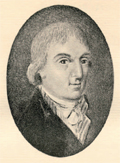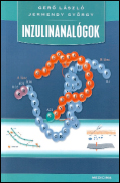The eLitMed.hu medical portal uses computer cookies for convenient operation. Detailed information can be found in the Cookie-policy.
Lege Artis Medicinae - 2007;17(06-07)
Content
[RECENT TRENDS IN THE PHARMACOLOGICAL TREATMENT OF EPILEPSY]
[Over the last decades, drug therapy for epilepsy has changed substantially, which generated new expectations. The first-line therapy of epilepsies is pharmacological treatment, which is effective in 60 to 70% of patients. Despite this favourable result, even today's drug therapy cannot yet be considered optimal. Prior to 1990, only six major antiepileptics were available for the clinicians, while since then more than ten new drugs have been introduced into the market. The older drugs have the advantage of long-term experience, known efficacy, and lower cost. These first generation drugs, while effective in patients with newly diagnosed epilepsy, share some unfavourable properties. They do not control many patients adequately, while with their long-term use chronic side effects develop. The purpose of this paper is to summarize recent data on the efficacy, safety, and administration of the older and new antiepileptic drugs. The main factors to consider when choosing a drug for treatment include syndromatological classification of the disease, efficacy and tolerability of the drug, and individual patient considerations. Of the first generation antiepileptics, carbamapezine, valproate, ethosuximide, and to some extent the clobazam and clonazepam are still widely used (benzodiazepines only as adjunctive therapy). The use of phenobarbitals, primidone, phenytoin, and sulthiam has diminished because of their side effects and inadequate efficacy. New antiepileptics are more efficient primarily in the therapy of West syndrome, Lennox-Gastaut syndrome, and in idiopathic generalized epilepsies. The pharmacokinetic properties of gabapentin, lamotrigine, levetiracetam, and oxcarbazepine are favourable, and their clinical use is safe. The use of felbamate, vigabatrin, and topiramate requires close attention because of their side effects.]
[CONTROVERSIAL EFFECTS OF NITRIC OXIDE: INTEGRITY AND TOXICITY]
[Nitric oxide is a key molecule of the human body. Since its discovery, a library of books and papers have been published on its physiological and pathophysiological role. It is involved in almost all pathological processes. In healthy individuals nitric oxide plays a crucial role in the vascular regulation by protecting against atherosclerosis, myocardial infarction and stroke. In the central nervous system, nitric oxide in its function as a neurotransmitter is responsible for synaptic plasticity, long-term potentiation, memory and a number of neuroendocrine control mechanisms. Furthermore, during inflammation and host defense, macrophages and neutrophils produce nitric oxide that has antibacterial, antiviral, and tumour cell killing activity. In pathologic conditions, however, nitric oxide reacts with superoxide anion to form peroxynitrite that damages the enzymes of the mitochondrial respiratory chain, superoxide-dismutase, reduced glutathion and activates or inactivates signalling molecules. During ischaemia- reperfusion, nitric oxide and peroxynitrite contribute to nitrative/nitrosative stress, DNAfragmentation and consequent polyADP-ribosepolymerase- 1 enzyme activation both in coronary thrombosis and ischaemic stroke.]
[THE IMPORTANCE OF ATTITUDES TO MEDICATION IN LIPID-LOWERING THERAPY PATIENT CO-OPERATION - PERSISTENCE AND COMPLIANCE]
[Controlled clinical studies on statins have produced evidence that the aggressive lowering of LDL-cholesterol (LDL-C) level reduces the mortality rate of ischaemic heart disease. About 40% of treated patients achieve the cholesterol target level. The observance of medication instructions on a daily basis (compliance) and willingness for long-term taking of the drug (persistence) are crucially important to avoid severe complications. In the long term, patients take only about 50% of their medicines according to the instructions. As a result of the generally poor compliance and persistence in taking the medications, the decrease in morbidity and mortality observed in clinical studies do not occur under real-life conditions. Patients with poor compliance (<80%) will experience only a minimal health benefit and the cost-effectiveness of the therapy will markedly decrease. For patients with poor persistence who discontinue their treatment before benefits at the clinical endpoints could manifest, the resources invested into the therapy will be lost. Both compliance and persistence deteriorate as the number of concurrently taken medicines increases. Since less than 50% of the programmes aimed at improving patient co-operation are successful, therapeutic decisions should preferably be made by taking into consideration the expected compliance/persistence already at the time of choosing the medication. By widening the use of fixed-dose combination therapies, the efficiency of treatment can substantially be increased in patients who concurrently take several medicines and require aggressive lowering of blood pressure or LDL-C level.]
[ACE-INHIBITORS IN THE SECONDARY PREVENTION OF CORONARY ARTERY DISEASE]
[The beneficial effects of angiotensin-converting enzyme inhibitors on biochemical and vascular markers have been proven by many experimental studies. Reduction of the angiotensin-II level has a positive effect on oxidative stress, lipid peroxidation, apoptosis, inflammatory and prothrombotic processes. Two large multicentric trials, EUROPA and HOPE, showed that perindopril and ramipril significantly reduce mortality and the risk of both fatal and non-fatal cardiovascular events in patients with atherosclerosis, thereby making them the base drugs of secondary prevention of coronary artery disease.]
[THE SAFETY OF TREATMENT WITH PEGYLATED INTERFERON-ALPHA-2A AND RIBAVIRIN IN PATIENTS WITH CHRONIC HEPATITIS C INFECTION, BASED ON HUNGARIAN EXPERIENCE]
[INTRODUCTION - Adverse effects of treatment for chronic C virus hepatitis present an important problem both for the patient and the clinician. The reduction of drug doses or the suspension of therapy lessen the likelihood of recovery. PATIENTS, METHODS - Between 2001 and 2004, 66 patients with chronic hepatitis C received 180 μg pegylated interferon-alpha-2a per week and 800-1200 mg ribavirin per day, 6 of whom for 24 weeks and 60 patients for 48 weeks. During treatment, patients were closely followed in order to recognize any adverse effects early. RESULTS - Of the patients treated for 48 weeks, 48.3% developed adverse effects, with changes in the differential in 41.7%, and anaemia, low platelet count, neutropenia in similar rates. Further side effects included cardiac complications, skin symptoms, persisting high fever, autoimmune thyroiditis and liver failure, altogether in 9 cases. Dose reduction or temporary suspension of pegylated interferon-alpha-2a was necessary in 21 cases (31.7%), while complete cessation of this treatment was decided in 7 cases, most of them because of blood count changes. The 1000 to 1200 mg per day ribavirin had to be reduced in 30.8% of patients, while treatment was stopped in 3 cases. Long-term virological remission occurred in 48% of patients who received treatment for 48 weeks, whereas no such result was observed among any of those treated for 24 weeks. CONCLUSION - Adverse effects of variable severity developed in nearly half of the patients with chronic hepatitis C infection who received antiviral treatment for 48 weeks, but treatment had to be stopped in only a small proportion of this group. Early treatment of adverse effects can prevent the need to cease therapy and may improve its efficiency.]
[ALTERATIONS IN MYOCARDIAL CONTRACTILE PROTEIN COMPOSITION IN DIASTOLIC HEART FAILURE]
[Disturbances in ventricular relaxation may lead to the development of diastolic heart failure. The analysis of left ventricular endomyocardial biopsy specimens may help understand the underlying structural and functional changes. Such analyses have lead to the recognition that at the optimal sarcomere length of the Frank- Starling mechanism (i.e., at 2.2 μm), passive force values of the cardiomyocytes are significantly higher in individuals with diastolic heart failure than in healthy controls. As a probable explanation to this finding, increased expression of the stiffer N2B isoform of the myofilamental titin protein, at the expense of the more elastic N2BA titin isoform, has been recognized. Moreover, decreased phosphorylation of the contractile proteins was also suggested to contribute to the development of diastolic heart failure. These changes together, and along with an increase in extracellular collagen content, may greatly contribute to the relaxation disturbance observed in diastolic heart failure.]
[POST-INFARCTION CARDIAC FAILURE]
[Recent advances in the care of acute myocardial infarction have resulted in more patients surviving myocardial infarction than earlier. However, heart failure is a common complication in these patients, which in turn is associated with substantial mortality, primarily due to a remodelling of the left ventricle that already starts in an early stage of the myocardial infarction. The aim of this review article is to present the pathomechanism of this remodelling and to discuss related therapeutic options. Current guidelines recommend the use of an angiotensin- converting enzyme inhibitor combined with or followed by an angiotensin receptor blocker, a beta-blocker, and an aldosterone antagonist in post-infarction patients with concomitant heart failure.]
[ANGIOTENSIN-CONVERTING ENZYME INHIBITORS AND ANGIOTENSIN-2 RECEPTOR BLOCKERS IN CHRONIC HEART FAILURE]
[The rennin-angiotensin system plays a major role in cardiovascular diseases. In the past decade, extensive research investigated the possible clinical benefit of the use of angiotensin-converting enzyme inhibitors in various clinical conditions. Their benefits have been clearly demonstrated in many cardiovascular conditions and agreement as to their potential usefulness has been established in chronic heart failure, asymptomatic left ventricular dysfunction, acute myocardial infarction and hypertension, and in the primary prevention in patients with high risk for cardiovascular events. Numerous randomised clinical trials over the past two decades established their efficacy in reducing adverse outcomes (mortality, hospitalitazion, and physical limitation) in patients with heart failure and left ventricular systolic dysfunction. Based on these results, angiotensin-converting enzyme inhibitors are indicated in all patients with left ventricular systolic dysfunction regardless of etiology, in the absence of intolerance or a contraindication. Despite the recent improvements in the treatment of heart failure, mortality remains high, with approximately 50% patients dead at five years. Although angiotensinconverting enzyme inhibitors decrease mortality, they incompletely suppress angiotenzin-2 when used chronically. Since angiotensin receptor blockers block the biologic effects of angiotenzin-2 more completely than angiotensin-converting enzyme inhibitors, they may be beneficial in the treatment of heart failure. In comparison trials, angiotensin receptor blockers were found to have no benefit over angiotensin-converting enzyme inhibitor therapy. Thus, angiotensin-converting enzyme inhibitors should remain first-line treatment for heart failure. However, in case of intolerance, angiotensin receptor blocker therapy is a reasonable substitute and provides excellent tolerability.]
[THE USE OF BETA RECEPTOR BLOCKERS IN CHRONIC HEART FAILURE]
[The beneficial effects of treatment with betablockers in patients with chronic heart failure have been demonstrated in several large, prospective, randomised, placebo-controlled clinical trials. In large trials with mortality as the endpoint, the long-term use of bisoprolol, carvedilol, nevibolol and metoprolol succinate have been associated with a reduction in total mortality, cardiovascular mortality, sudden cardiac death and death due to progression of heart failure in patients of functional classes II-IV. These favorable clinical experiences warrant a recommendation that beta-blockers should be used in all haemodynamically stable heart failure patients with reduced left ventricular systolic function who are on standard treatment, unless contraindicated. In this review, the most important data of clinical trials and practical considerations of therapy with beta-blockers in heart failure are summarized.]
[THE USE OF DIURETICS AND ALDOSTERONE RECEPTOR ANTAGONISTS IN CHRONIC HEART FAILURE]
[Diuretics are an integral part of the management of chronic heart failure. Although there are no large, randomized, placebo-controlled, multicentric studies available to show that loop- and thiazid diuretics improve survival, the efficacy of these drugs in relieving heart failure symptoms and fluid retention is indisputable. The third class of diuretics used in heart failure is aldosterone antagonists, whose beneficial effects on mortality and morbidity were demonstrated in the RALES and EPHESUS trials. In this paper, the effects and side effects of the various diuretics, as well as the indications and recommendations on their use are reviewed. New options in diuretic treatment, including adenosine receptor blockers, vasopressin antagonists, atrial natriuretic peptide analogues and ultrafiltration are also presented.]
[THE USE OF DIRECT VASODILATORS AND DIGITALIS IN CHRONIC HEART FAILURE]
[For the optimal treatment of heart failure patients with systolic dysfunction, supplementation of the standard diuretics plus neurohormonal antagonists treatment with the direct vasodilator combination dihydralazine+nitrate, as well as with digitalis may be necessary. Addition of hydralazine/dihydralazine+nitrate to the treatment of chronic heart failure is recommended if ACE-inhibitors or angiotensin-receptor blockers cannot be administered. Beta blockers should also be used in these cases. If symptoms persist or worsen, addition of this combination to the standard therapy is reasonable. Supplementation with digitalis, mostly digoxin should be considered in similar conditions. It can be especially beneficial for patients with high-ventricular-rate atrial fibrillation. To achieve maximal survival benefit, the dose of digoxin must not exceed 0.125 mg/day. Low body weight or muscle mass, significantly reduced renal function may make further dose reduction necessary. If renal function is severely limited, digitoxin instead of digoxin may be used.]
[NON-PHARMACOLOGICAL TREATMENT OF CHRONIC HEART FAILURE]
[Heart failure has a poor prognosis despite the advances in pharmacological treatment. The utilization of non-pharmacological treatment with appropriate indications significantly improves the quality of life and life expectancy of these patients. Cardiac resynchronization therapy with biventricular pacemaker has a clinically proven efficacy in the treatment of heart failure associated with intraventricular dyssynchrony. Implantable cardioverter- defibrillators decrease the mortality from sudden cardiac death. Heart transplantation is needed in cases refractory to therapy. There are several other non-pharmacological treatment approaches, including mechanical circulatory assist devices, total artificial heart and ultrafiltration, whose routine application is not recommended due to limited clinical experience, but the initial results are promising.]
[RECOGNITION AND MANAGEMENT OF ACUTE HEART FAILURE]
[Acute heart failure may develop in previously healthy hearts. Nevertheless, structural abnormalities can facilitate its development and also, chronic heart failure can progress into acute stage. Considering the total cost of care in the patient's life, this is the most expensive heart disease. The clinical signs and physical abnormalities are usually of diagnostic power, however, instrumental investigations are necessary to recognize complications and to guide therapy. Patients should be monitored in well equipped coronary care units. Therapy consists of medications, coronary revascularization and use of mechanical assist devices.]
[CARDIOLOGIC REHABILITATION IN CHRONIC HEART FAILURE]
[The past decade has seen a considerable change in the approach to manage heart failure. In chronic heart failure, physical training primarily improves peripheral circulation rather than the function of the left ventricle. Regular training of patients with stable NYHA II-III stages improves physical stress tolerance and respiratory function, and also reduces the over-activated sympathetic tone. It has beneficial effects on the biochemical processes of the skeletal muscles. The duration, intensity and frequency of the training are individually set and can be changed according to the clinical state of the patient. The recommended intensity of the training is 60 to 70% of the peak oxygen use. The duration and frequency of the training depends on the clinical state of the patient and it can be raised to 3 to 6 occasions and the duration can vary between 30 to 60 minutes. For safety reasons the patient should be monitored before, during and after physical training. Cardiological rehabilitation should be a team work, with the physician as the co-ordinator, but the physiotherapist, the dietician, the psychologist and the social worker all have important, indispensable roles in achieving the optimal state of the patient.]
1.
Clinical Neuroscience
Is there any difference in mortality rates of atrial fibrillation detected before or after ischemic stroke?2.
Clinical Neuroscience
Factors influencing the level of stigma in Parkinson’s disease in western Turkey3.
Clinical Neuroscience
Neuropathic pain and mood disorders in earthquake survivors with peripheral nerve injuries4.
Journal of Nursing Theory and Practice
[Correlations of Sarcopenia, Frailty, Falls and Social Isolation – A Literature Review in the Light of Swedish Statistics]5.
Clinical Neuroscience
[Comparison of pain intensity measurements among patients with low-back pain]1.
Clinical Neuroscience Proceedings
[A Magyar Stroke Társaság XVIII. Kongresszusa és a Magyar Neuroszonológiai Társaság XV. Konferenciája. Absztraktfüzet]2.
3.
Journal of Nursing Theory and Practice
[A selection of the entries submitted to the literary contest "Honorable mission: the joys and challenges of our profession" ]4.
Journal of Nursing Theory and Practice
[End of Life and Palliative Care of Newborns in the Nursing Context]5.
Journal of Nursing Theory and Practice
[Aspects of Occupational Health Nursing for Incurable Patients ]




























